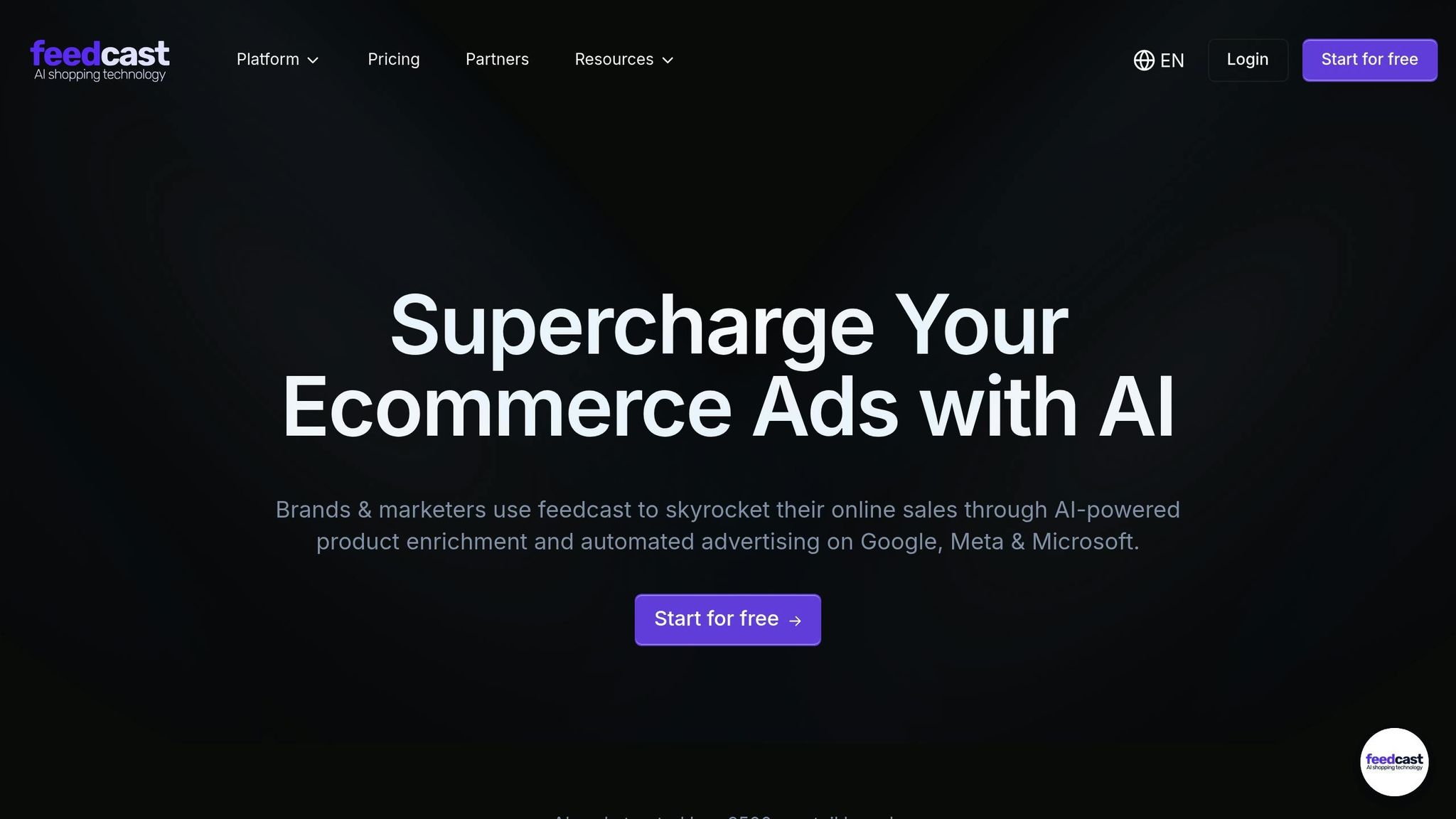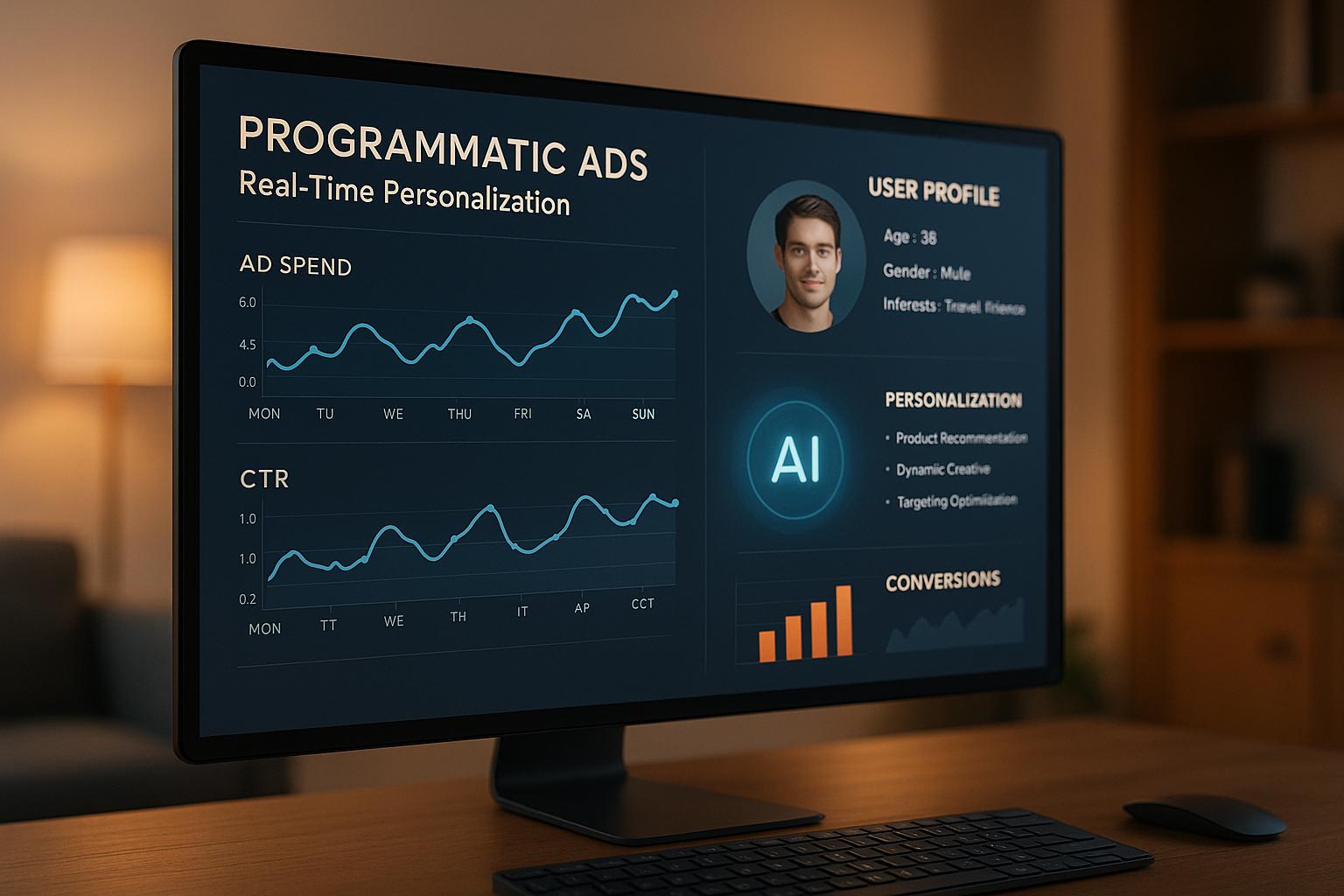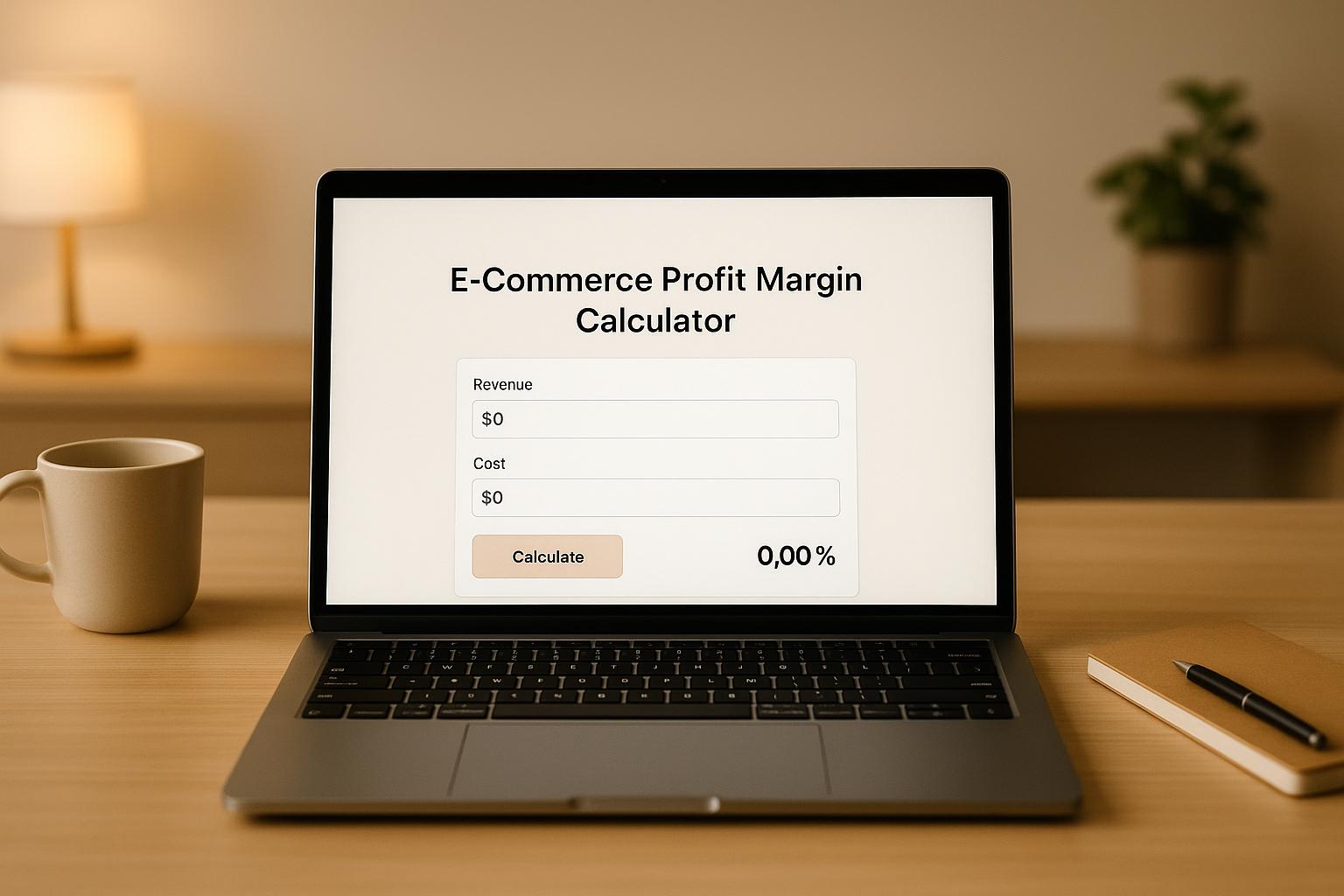5 RFM Segmentation Tips for Better Ad Targeting
Want better ad targeting? Start with RFM segmentation. By analyzing customer behavior through Recency, Frequency, and Monetary value, you can create tailored campaigns that drive results. Here's how to make it work:
- Define RFM segments: Group customers based on how recently they purchased, how often they buy, and how much they spend.
- Leverage AI tools: Platforms like Feedcast.ai automate segmentation and integrate with ad platforms like Google and Meta.
- Customize campaigns: Design targeted messages for each group - reward loyal buyers, re-engage at-risk customers, and cater to bargain hunters.
- Sync data with ad platforms: Use tools to keep audience lists updated and ensure precise targeting.
- Monitor and adjust: Track performance by segment, tweak messaging, and reallocate budgets for maximum ROI.
RFM segmentation helps you focus on high-value customers, boost engagement, and improve ad performance. Tools like Feedcast.ai streamline the process, making it easier to act on customer insights and optimize campaigns across platforms.
RFM Analysis: The Key to Targeted Marketing Campaigns
1. Define Your RFM Customer Segments
To build effective RFM (Recency, Frequency, Monetary) customer segments, start by understanding what each component measures and how to score them. Recency gauges how long it’s been since a customer’s last purchase, Frequency tracks how often they buy, and Monetary reflects how much they spend.
Each factor is typically scored on a 1–5 scale, where 5 represents the most recent, frequent, or high-spending customers. For example, a purchase made yesterday might score a 5 for recency, whereas a six-month gap might score a 1.
Set specific thresholds for scoring. For recency, you could break it down like this: 0–30 days (score 5), 31–60 days (score 4), and so on. Frequency might depend on how many purchases were made in the past year, while monetary scores could align with your average order value or lifetime value goals.
Once scored, combine these metrics to create actionable customer segments. For instance:
- 555: "Champions" – customers who are recent, frequent, and high-value buyers.
- 511: "New Customers" – recent purchasers with potential to grow.
- 155: "Big Spenders" – infrequent buyers who make large purchases.
Tailor segment definitions to your business model. A subscription service might emphasize recency since consistent engagement is critical, while an electronics retailer might focus more on monetary value due to fewer, higher-value purchases. For seasonal industries like fashion, frequency during peak periods could be the priority.
Give your segments descriptive names like "Loyal Advocates" or "At-Risk VIPs" to make them easy to identify and target effectively.
Adjust scoring ranges to fit your needs. Some businesses may find a simpler 1–3 scale works better, while others might prefer the detail of a 1–10 scale. The goal is to ensure each segment is large enough to justify its own marketing strategy but distinct enough to require unique messaging. Proper segmentation lays the groundwork for more personalized and impactful campaigns.
2. Use AI-Powered Tools like Feedcast.ai

Managing large volumes of customer data from multiple sources can feel like an uphill battle, especially when relying on manual RFM segmentation. That’s where AI-powered platforms like Feedcast.ai come in. These tools take the hassle out of processing transactional data, delivering actionable insights through a unified dashboard in just minutes[1][3].
Feedcast.ai streamlines the analysis of all three RFM components - recency, frequency, and monetary value. Instead of spending hours crunching numbers, you can let AI algorithms identify high-value customer segments and flag those whose engagement is slipping.
But Feedcast.ai doesn’t stop at basic segmentation. It goes further by using AI-driven data enrichment to enhance product details like titles, descriptions, and attributes. This ensures your customer profiles are built on the most precise and current transaction data available. The result? More accurate targeting and RFM segments that genuinely reflect customer behaviors and preferences. This enriched data is then seamlessly integrated into ad campaigns for better results.
When paired with RFM insights, Feedcast.ai makes automated ad creation incredibly effective. The platform uses AI to craft personalized ad copy and creatives tailored to specific segments. For instance, frequent buyers might receive loyalty rewards, while recent shoppers could see recommendations for complementary products[2]. And the best part? You can manage these campaigns across platforms like Google, Meta, and Microsoft Ads - all from one dashboard.
Another standout feature is real-time performance optimization. This allows you to see how different RFM groups respond to campaigns, tracking metrics like conversion rates, click-through rates, and ROI. With this data, you can quickly adjust targeting, messaging, and budgets to focus on what’s working. By combining tailored ad strategies with live performance metrics, Feedcast.ai helps you continuously refine your campaigns, ensuring maximum ROI.
The platform’s integrations with major e-commerce systems like Shopify, WooCommerce, and Prestashop further enhance its capabilities. These connections allow you to capture the entire customer journey, not just fragmented pieces.
Users have reported impressive time savings and improved ROI thanks to Feedcast.ai’s automation and optimization features. For example, one e-commerce business uncovered 20% more high-value customers during their annual planning, leading to significantly better campaign results[5].
3. Create Custom Ad Campaigns for Each RFM Group
After identifying your RFM segments, the next step is to design tailored campaigns that resonate with each group's specific preferences and behaviors. A one-size-fits-all approach won't work when you're dealing with customers who differ in purchasing habits and lifetime value. Instead, customize your messaging to align with the unique traits of each segment.
For your high-value customers - those who purchase frequently, spend significantly, and shop recently - focus on making them feel special. These are your top earners, so retention and increasing their order value should be key priorities. Think exclusive perks like early access to new products, premium discounts, or loyalty rewards. For instance, a campaign such as "Top Customer Exclusive: 20% Off Our New Collection" can show appreciation while encouraging ongoing engagement.
For frequent buyers who haven't shopped recently, a re-engagement strategy is essential. Use personalized product recommendations based on their past purchases to draw them back. A message like "We Miss You! Check Out These Items We Think You'll Love" paired with products from their favorite categories can reignite their interest.
Recent high-spenders who are new to your brand offer a great opportunity to build loyalty. These customers have already shown they’re willing to invest in your products, so nurture the relationship with campaigns that introduce them to your brand’s story, community, or complementary products. Cross-selling works particularly well here, as they’ve already demonstrated a willingness to spend.
For at-risk customers, win-back campaigns with strong incentives are key. Consider offering substantial discounts, free shipping, or special bundles to bring them back. A campaign like "We Want You Back – 30% Off Your Next Order" can help overcome their hesitation and encourage reactivation.
Bargain hunters, those who only shop during sales or with discounts, should receive campaigns that highlight your best deals and limited-time offers. Since these customers are price-sensitive, focus on messaging that emphasizes savings, value, and urgency to drive conversions.
It’s crucial to ensure your offers and messaging align with each segment’s behavior. For example, a customer who typically spends $200 per order shouldn’t receive the same $10 discount as someone whose average spend is $25. Similarly, a customer who shops monthly will require different messaging than one who only purchases once a year.
Finally, allocate your budget based on the value of each segment. Invest more heavily in campaigns targeting your highest-value customers while using cost-efficient strategies for lower-value groups.
sbb-itb-0bd1697
4. Connect RFM Data with Your Ad Platforms
After crafting tailored campaigns for your RFM segments, the next step is crucial: integrating that customer data into your advertising platforms to drive real results. Without this connection, your well-defined RFM segments sit idle in your analytics tools, unable to influence ad targeting or optimization. Here's how integration bridges the gap between data and actionable ads.
The process starts with uploading segmented customer lists to platforms like Google Ads, Facebook Ads, and Microsoft Ads. From there, you can use these lists to build custom audiences. For your most valuable customers, you might create lookalike audiences to reach similar prospects. Meanwhile, for at-risk groups, retargeting campaigns with tailored messaging and offers can help re-engage them.
However, keeping these lists updated manually is a challenge. Each platform has its own file format requirements, audience size rules, and criteria for matching data, turning this into a time-consuming task.
This is where Feedcast.ai's unified dashboard steps in. It automatically syncs your RFM-based audiences across platforms like Google, Facebook, Instagram, and Microsoft Ads. No more juggling multiple interfaces or manually uploading data - it’s all handled for you. This automation allows for more precise ad personalization.
Building on its AI-driven segmentation, Feedcast.ai also enhances product data and creates personalized ad copy for each segment. For instance, when targeting frequent buyers with cross-sell campaigns, the platform generates product recommendations and ad creatives based on their purchase history and preferences. This ensures your ads resonate with the right audience.
For e-commerce businesses, Feedcast.ai simplifies dynamic product ads by keeping RFM segments updated with the latest product data. This means each customer segment sees ads featuring products that align with their behavior and interests, making your campaigns more relevant and effective.
The platform also offers unified performance tracking, which is a game-changer for managing RFM-based campaigns across multiple channels. Instead of switching between platforms, you can monitor all your metrics in one place. This makes it easier to adjust budgets, refine targeting, and optimize your strategy based on real-time data.
5. Monitor Performance and Adjust Your Budget
Once your RFM campaigns are live, the real work begins - tracking their performance and making adjustments. Customer behavior can be unpredictable; even your "At Risk" segment might surprise you with strong engagement, while high-value customers may require extra attention. Regular monitoring helps you spot these trends early and refine your strategy in real time.
Instead of focusing solely on overall campaign performance, dig into how each RFM segment is performing. For example, one segment might show much higher engagement rates than another, giving you valuable insights into what’s working and what’s not[7]. When you notice these differences, tweak your messaging and testing strategies to better align with each group.
If a particular segment isn’t responding as expected, it’s time to pivot. For instance, if your "At Risk" customers don’t bite on discount offers, try tailoring product recommendations based on their past purchases instead[8]. Experiment with variables like subject lines, timing, and how often you reach out. By testing one element at a time, you can pinpoint what drives better engagement and conversion rates[6]. Frequent buyers might welcome regular updates, but occasional shoppers could feel overwhelmed by too many messages[8].
Once you’ve optimized your messaging, turn your attention to budget allocation. Use performance data to guide your decisions - if one segment consistently delivers a higher return on ad spend, consider shifting more funds in that direction. But don’t write off underperforming groups entirely; sometimes, all they need is a tweak in timing or a fresh approach to unlock their potential.
RFM segmentation is not static - customers move between segments as their behavior changes. That’s why regular performance reviews are so important. By keeping a close eye on these shifts, you can adapt your campaigns to ensure your budget is being used effectively and your ads are reaching the most engaged audiences.
Conclusion
RFM segmentation transforms ad targeting by providing actionable insights about your customers. Instead of wasting resources on broad, generic campaigns, it allows you to focus your budget on the customers most likely to engage, make purchases, and become loyal supporters of your brand.
By implementing these five strategies, businesses can take a structured approach to customer engagement. For instance, companies using RFM segmentation have identified 20% more high-value customers during their annual planning. Additionally, RFM-driven campaigns often lead to better open rates, higher conversions, and improved return on ad spend[5].
Tools like Feedcast.ai make these strategies accessible for businesses of all sizes. With automation and AI, you can skip the time-consuming process of manually segmenting customers and creating campaigns. Instead, unified dashboards, AI-generated ads, and real-time analytics let you act quickly and consistently on customer data. This not only saves time but also helps you build stronger connections with your audience over time.
Personalized ads also go beyond short-term gains - they strengthen customer relationships. High-value customers feel appreciated, while those at risk of disengaging receive targeted attention. This is especially valuable for businesses where returning customers contribute more than 40% of revenue or where the average purchase frequency exceeds 1.5 orders[4].
One of the strengths of RFM segmentation is its flexibility. As customer behavior shifts, your strategy can adapt. A simple three-tier system can grow into a comprehensive framework for fine-tuning product recommendations, email schedules, and ad budgets.
For e-commerce businesses looking to move past generic advertising, RFM segmentation offers a clear and effective path forward. By combining customer insights, tailored messaging, and automation, you can build a foundation for long-term growth. Your customers will feel the difference, and your improved efficiency will show up in your bottom line.
FAQs
How does RFM segmentation help improve ad targeting and campaign performance?
RFM segmentation takes your ad targeting to the next level by grouping customers based on Recency, Frequency, and Monetary value of their interactions. This method helps pinpoint your most valuable customers and craft messages that align with their specific behaviors, leading to ads that feel more relevant and drive stronger engagement.
By zeroing in on the customer groups with the highest potential, RFM segmentation helps you make the most of your marketing efforts. It not only improves conversion rates but also maximizes ROI by ensuring your campaigns reach the right audience, making them both more efficient and impactful.
How does AI improve RFM segmentation and ad targeting?
AI takes RFM segmentation and ad targeting to the next level by automating the process of analyzing customer data. This means businesses can quickly pinpoint key audience groups, such as loyal customers, high-value buyers, or those at risk of disengaging. The result? Campaigns that hit the mark by reaching the right people at the perfect moment.
On top of that, AI delivers real-time insights, keeping pace with shifting customer behaviors. This allows businesses to tweak campaigns dynamically, ensuring they stay relevant. With AI in the mix, companies can craft highly tailored ads, boost customer engagement, and get the most out of their advertising budgets.
How can I optimize my marketing strategies for different RFM segments to boost ROI?
To improve ROI with RFM segmentation, align your strategies with the specific behaviors of each customer group. For high-value customers, prioritize personalized offers, exclusive deals, and loyalty rewards to deepen their bond with your brand. When it comes to lapsed customers, focus on re-engagement campaigns that offer attractive discounts or remind them of previous purchases to reignite their interest.
Using RFM data allows you to direct your marketing resources where they’ll have the biggest impact. This targeted approach not only boosts customer engagement but also strengthens retention and drives revenue, ensuring your advertising efforts deliver maximum results.
Geoffrey G.




